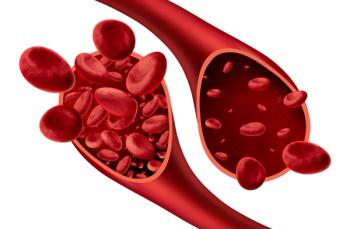
Medicaid incentives: worth the effort?
More Medicaid incentive programs are cropping up across the country. Here's a look at the programs, and some of the early results.
The theory behind wellness incentives is that, if people take better care of themselves, they’ll feel better, use fewer healthcare resources, and save money. There should be no better place to demonstrate that theory than in the Medicaid population, where chronic diseases and comorbidities pervade the landscape.
The problem, as some behavior modification initiatives in Medicaid populations are showing, lies in putting into practice workable programs that can produce measureable and even achievable results.
The Medicaid Incentives for Prevention of Chronic Diseases (MIPCD) initiative, funded by the Department of Health and Human Services (HHS), is the biggest thing happening in Medicaid wellness programs right now.
But similar state-level programs created as part of the 2005 Deficit Reduction Act (DRA) have been in place for almost a decade. The DRA gave state Medicaid programs more leeway to experiment with the mix of services they offered, resulting in a proliferation of creative wellness offerings.
Florida, for example, gave benefit credits for getting a mammogram, bringing in a child for an immunization, or participating in a smoking cessation course. West Virginia targeted unnecessary use of emergency departments and missed physician appointments.
But their success was less than expected. A March 2013 article in Health Affairs that examined results from state Medicaid wellness programs in Florida, Idaho and West Virginia found common issues that included:
- Limited evaluation of the programs’ effectiveness;
- Potentially inadequate incentive amounts;
- Low awareness among the target populations that the programs even existed;
- Benefit structures that might have been too complex to be easily understood;
- An over-reliance on physician participation; and
- The administrative difficulty of tracking wellness events (such as attending a weight-loss class) that were not billable.
A more recent report on these programs and similar initiatives in Michigan, New Mexico and Wisconsin, issued last November by the Center for Health Care Strategies (CHCS), summarized lackluster results:
- Over a two-year period, an Idaho program that targeted weight loss and smoking cessation only enrolled 1,422 participants out of an eligible population of about 185,000;
- Only about half of all the benefit credits earned by participants in a Florida program were ever redeemed.
On the other side of the ledger, a different Idaho wellness program that targeted well-child exams and immunizations for Children’s Health Insurance Program (CHIP) enrollees, saw the number of children with up-to-date exams and immunizations more than double.
An explanation for some of the disappointing early results lies in the challenges that Medicaid recipients face, says Kathryn Saulsgiver, PhD, a senior research investigator at the University of Pennsylvania’s Center for Health Incentives and Behavioral Economics.
They include financial barriers, such as being able to afford transportation and childcare, which are exacerbated when repeated visits might be needed.
AbrahamOther barriers include limited access to high-quality, fresh food ( food deserts) and scarce opportunities for exercise caused in part by a lack of safe outdoor areas, says Jean Abraham, PhD, an associate professor in the Division of Health Policy and Management at the University of Minnesota.
Both Saulsgiver and Abraham caution against trying to apply lessons from workplace wellness programs to similar Medicaid programs. “Recruitment is one of the key issues,” on the Medicaid side, says Saulsgiver, who notes the challenge involved in even contacting potential participants.
Employees and Medicaid beneficiaries are very different, agrees Abraham. Employee populations are generally more educated than Medicaid populations so there are fewer issues around health literacy, she says, but “there are potentially more gains to be had” in Medicaid populations, because of the high prevalence of obesity and tobacco use.
In spite of the challenges, some lessons do seem to have emerged from the first crop of state-level Medicaid wellness programs, the Health Affairs article and CHCS reports suggest.
In order to work, Medicaid wellness programs need to zero in on what efforts are being expected of participants and at what cost to them, Saulsgiver says. She notes that getting a “one-off behavior” such as a single doctor visit is simpler than, say, compliance with a six-month smoking-cessation program with multiple visits.
If the early Medicaid wellness programs in Florida, Idaho, West Virginia and elsewhere were the first-generation initiatives, the programs now ongoing under MIPCD are definitely Medicaid Wellness 2.0. In September 2011, 10 states received HHS demonstration grants under the MIPCD, which was mandated by the Affordable Care Act. MIPCD’s goal is to develop evidence-based, state-level chronic-disease prevention programs that use incentives to encourage Medicaid beneficiaries to participate and cover one or more of five conditions or behaviors: smoking, diabetes, obesity, hyperlipidema and hypertension.
The HHS Initial Report to Congress on the MIPCD in November 2013 found all of the states were offering monetary incentives to participants, such as prepaid debit cards, gift cards and flexible spending accounts for wellness activities; vouchers to be used at farmers’ markets, exercise equipment and healthy foods cookbooks; treatment-related incentives such as free nicotine replacement patches; and points redeemable for rewards.
The maximum value of the various incentives ranges widely, from $20 to $1,150 annually. Several states are also providing continuing medical education credits to encourage participation by providers.
MIPCD states must evaluate their programs’ effectiveness; most are doing so through randomized controlled trials (RCTs) that include cost-effectiveness analyses.
SlossZooming in on two very different states provides a snapshot of what MIPCD programs look like. The program in California focuses on tobacco control for two main reasons, explains Gordon Sloss, chief administrative officer of the Office of the Medical Director, California
Department of Health Care Services. First, tobacco is the leading cause of preventable morbidity and mortality in the United States and costs California more than $18 billion a year overall, including $9.8 billion in direct healthcare costs.
Second, California has had a tobacco control program in place for about 20 years, with a tobacco helpline operated by the University of California, San Diego (UCSD).
The first phase (set up as an RCT) was a smoking-cessation program that offered participants up to $60, plus free nicotine patches ($53 for a four-week supply). The trial’s results will be published at some point, Sloss says.
The still-ongoing second RCT is testing postcards versus robo-calls in re-engaging Medi-Cal members who dropped out of phase one. More than 35,000 are now enrolled, of whom 5,200 will be participants in the actual RCT, says Sloss. “Direct-to-consumer engagement has been very cost-effective and successful in driving calls to the helpline” operated by UCSD, he says.
New Hampshire’s program, meanwhile, focuses on smoking cessation and weight control among the mentally ill, says Mary Brunette, MD, medical director of the Bureau of Behavioral Health, New Hampshire Department of Health and Human Services. She notes that people with mental health issues are at high risk for cardiovascular problems and early death.
Participants in the New Hampshire program can receive cash and other incentives, says Kelley Capuchino, a Medicaid policy analyst with the Bureau of Behavioral Health, but sometimes the upside is less tangible. Part of the benefit for participants is the “social connectedness” of learning to feel comfortable at a gym, she says, and the program provides coaching for this.
Before the program, Capuchino says, one woman on Medicaid had driven to a gym every day for about two years but could never get up the nerve to actually go inside. At last report, after joining the wellness program, she was working out regularly, had lost 100 pounds, had completed a half-marathon and was re-connecting with her family.
In its MIPCD Initial Report, HHS concluded that it was too early to recommend whether the five-year program should continue. That will presumably have to wait until the final report, due by July 1, 2016.
But as the state and MIPCD programs head toward completion, researchers and policy makers are looking forward to the insights that will be gained. A lot of the data from employer-based wellness programs is more correlational, says Abraham, while the MIPCD research is much more prospective and potentially comprises “a stronger set of studies,” she says. “I don’t think these programs are going to be a magic bullet. We’ll learn a substantial amount about effective incentives.”
But MIPCD is helping to break new ground in terms of incentives, bridging academic research with population health, says Saulsgiver. “We’ll learn a lot about how to engage these populations,” the barriers they face and how to get them to change their behaviors. “Once this program is done,” she predicts, “We will have a sort of toolbox.”
Newsletter
Get the latest industry news, event updates, and more from Managed healthcare Executive.






















































